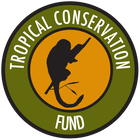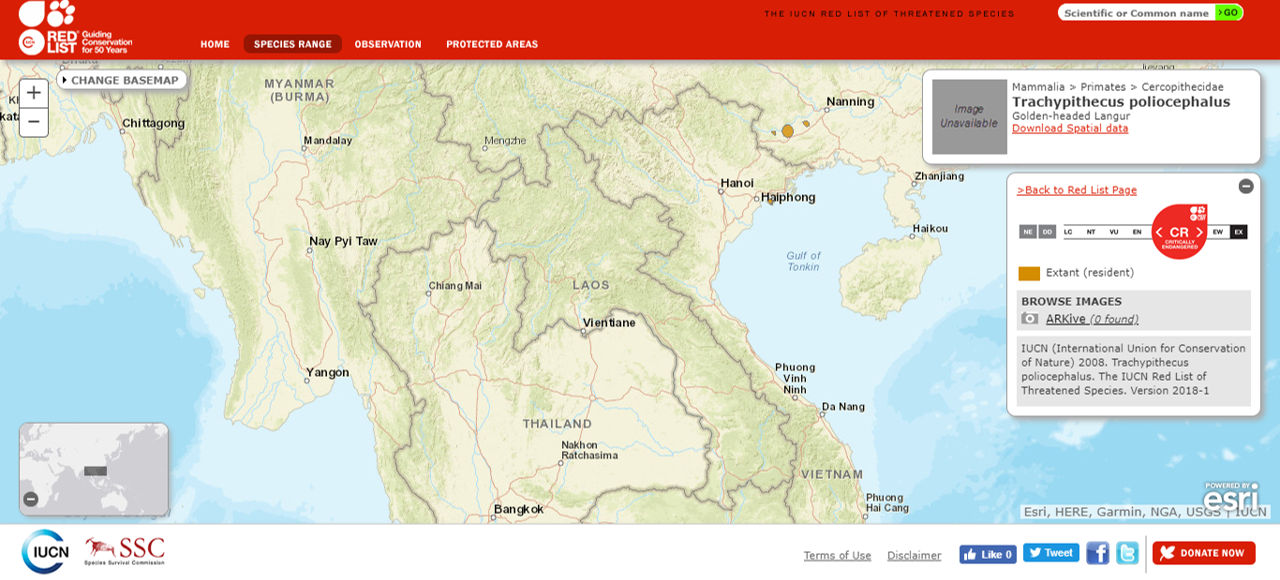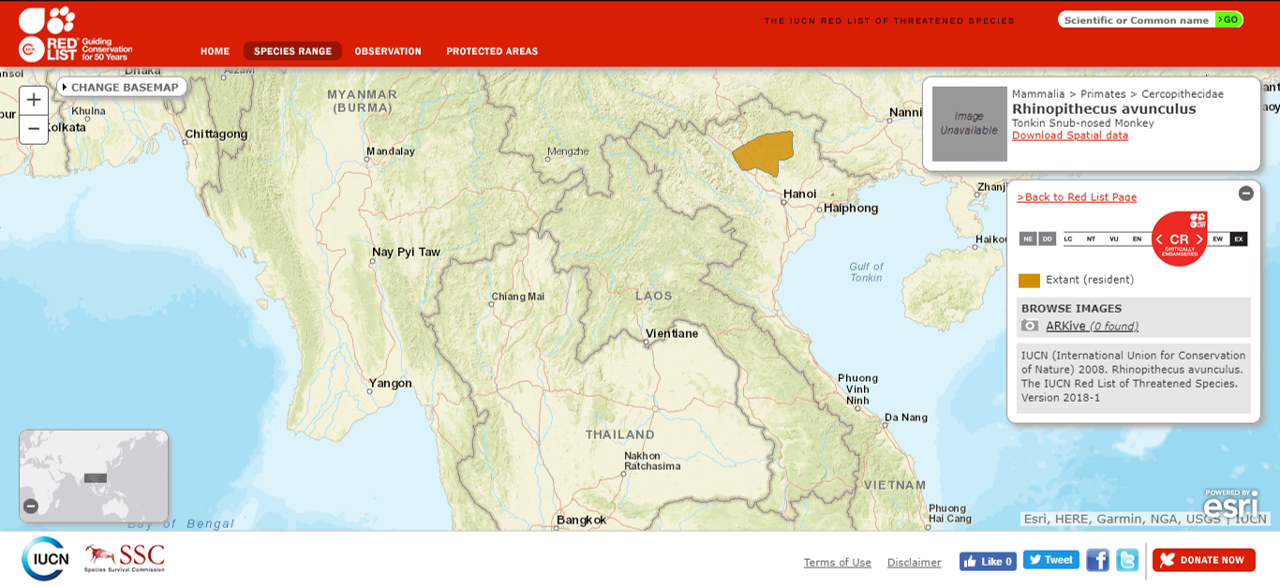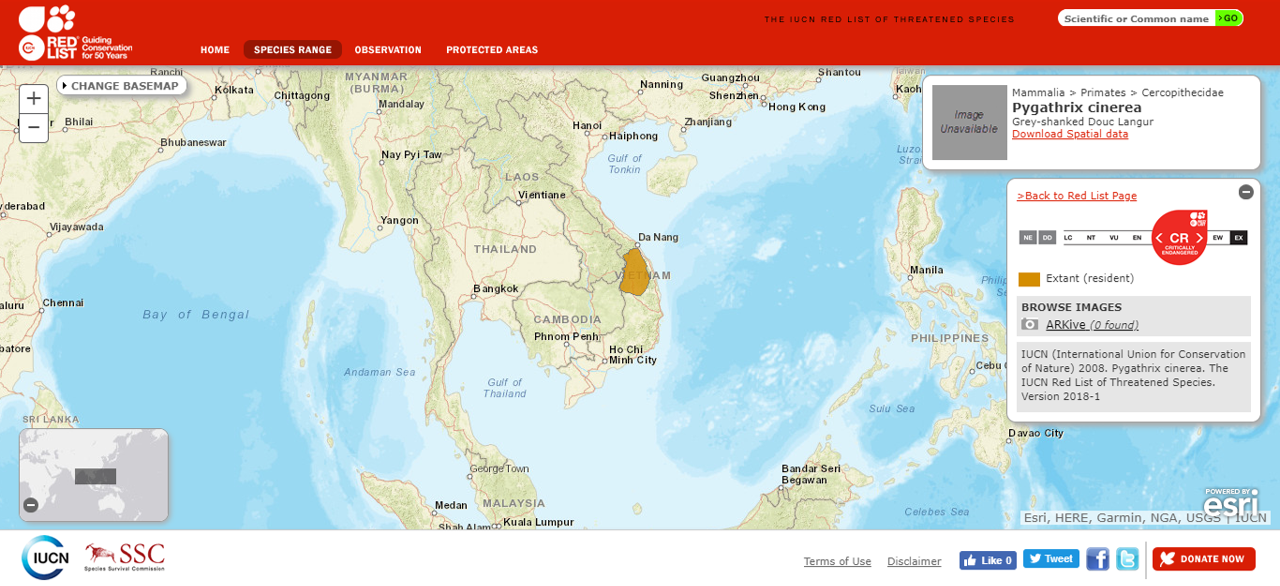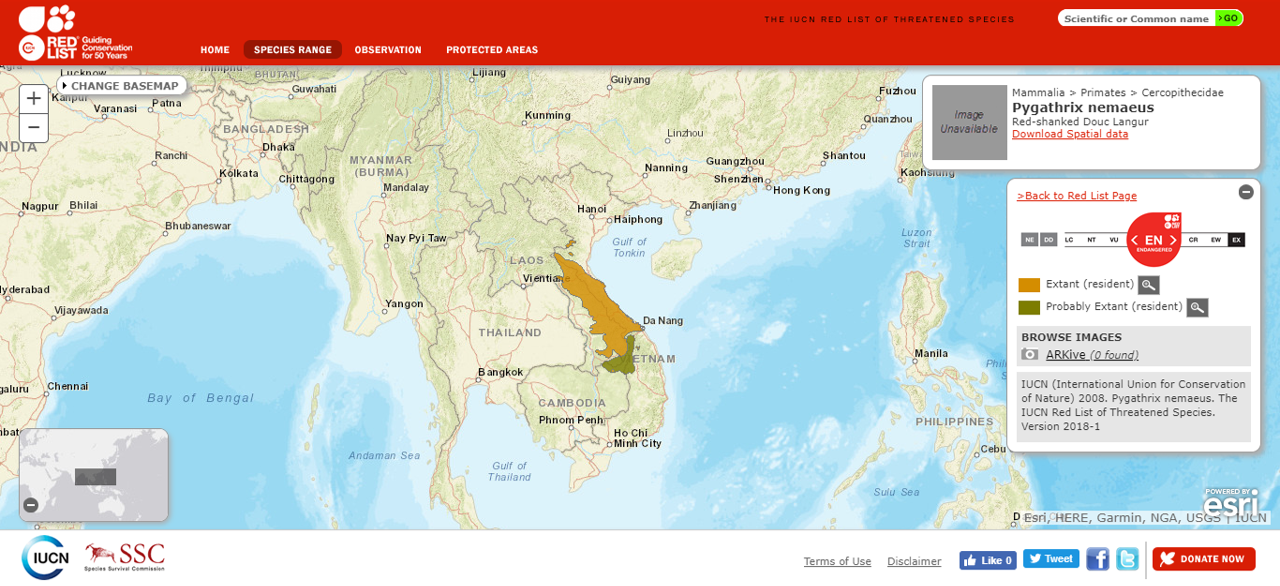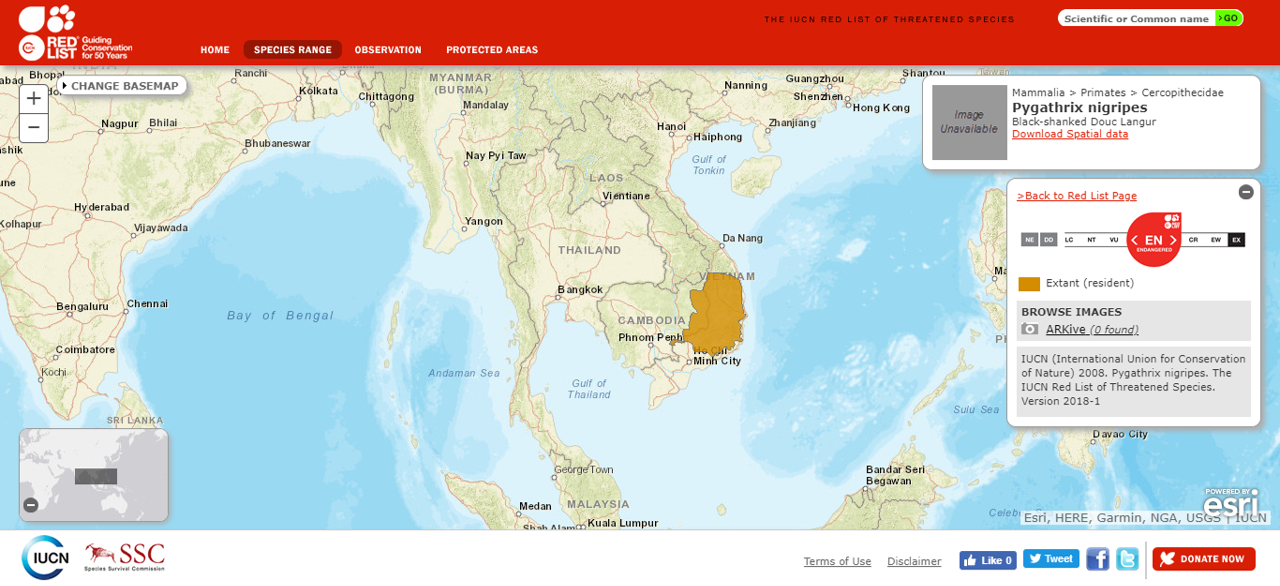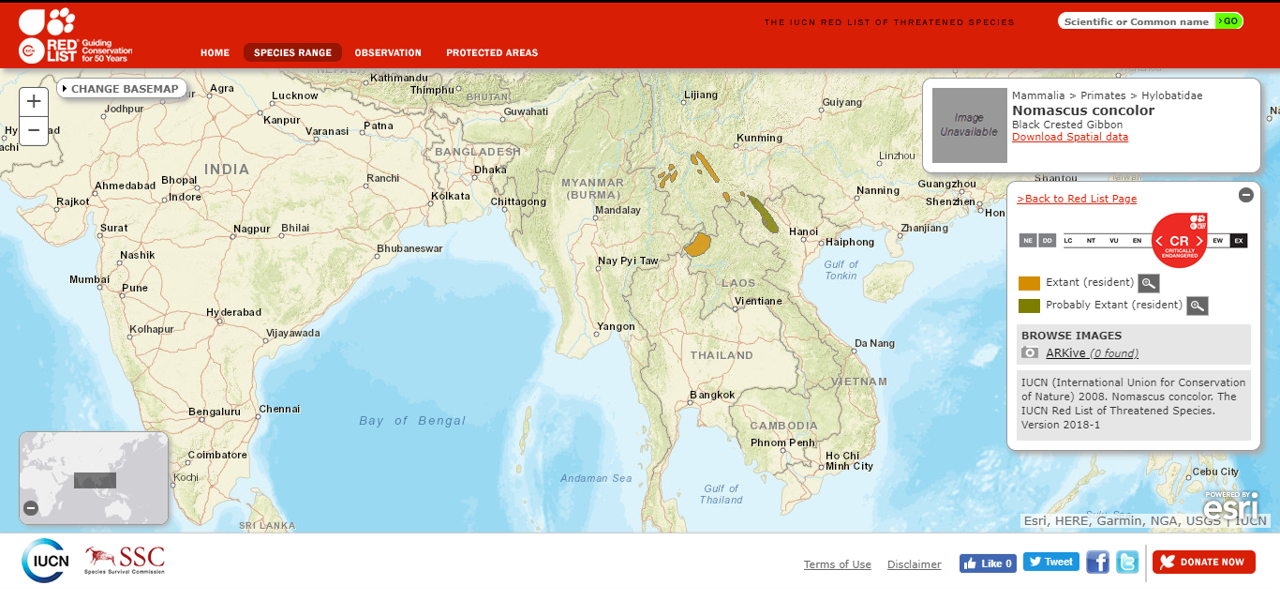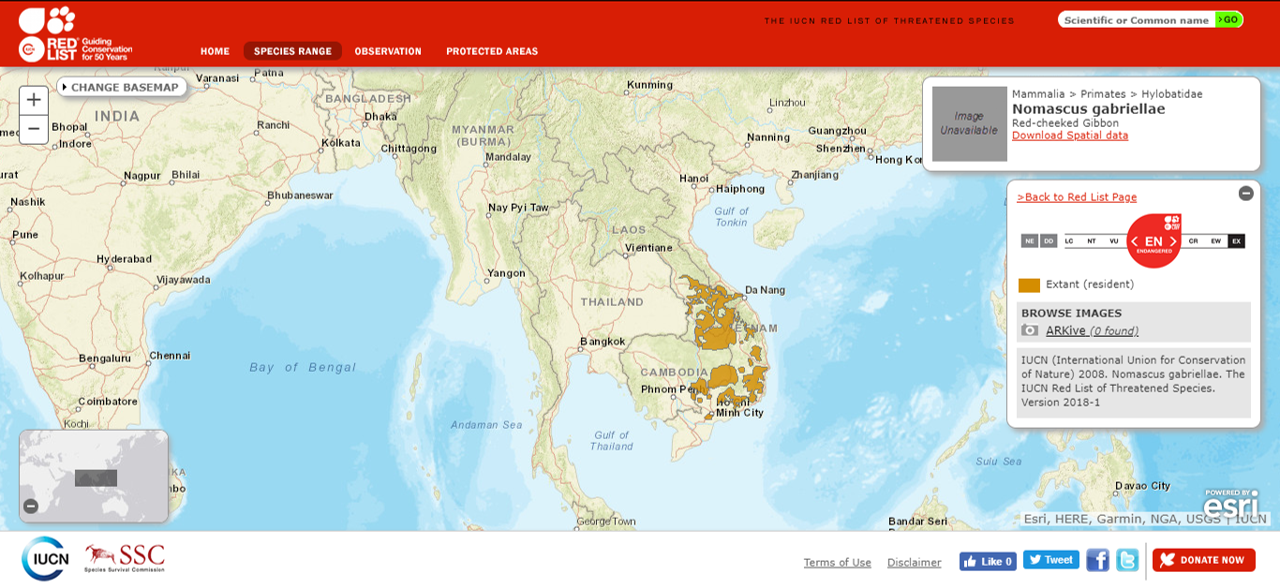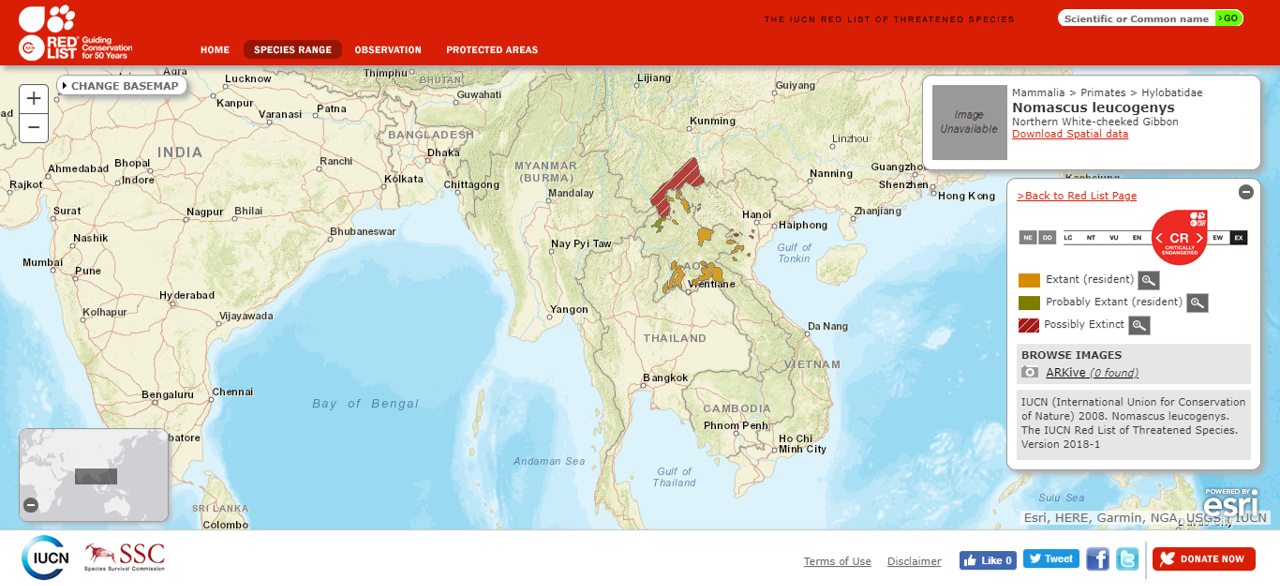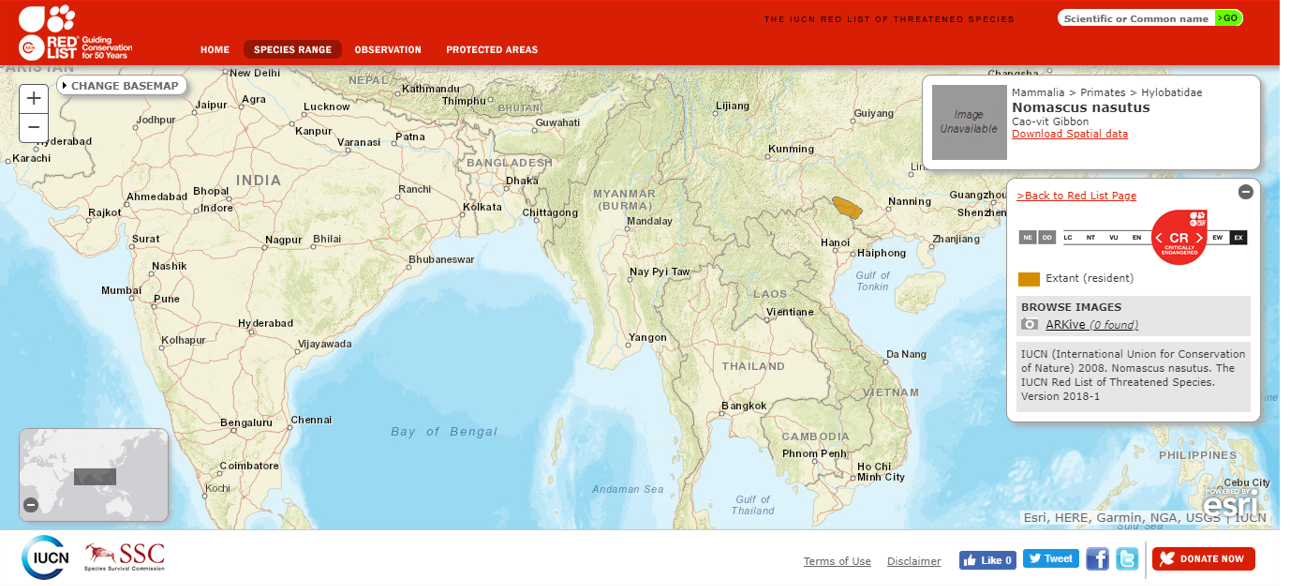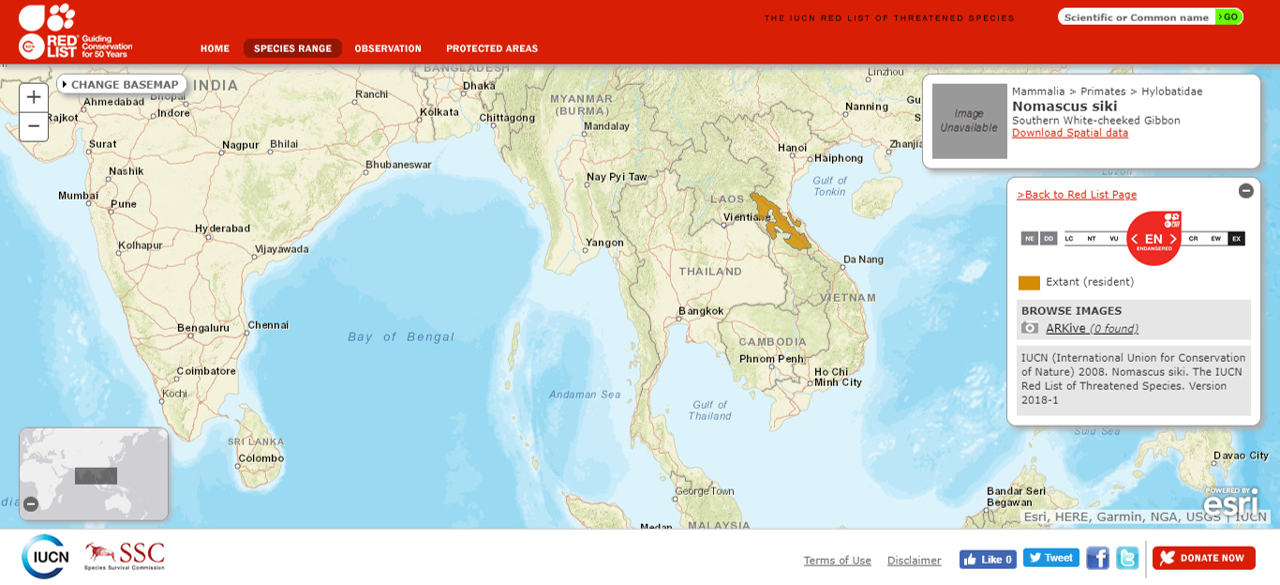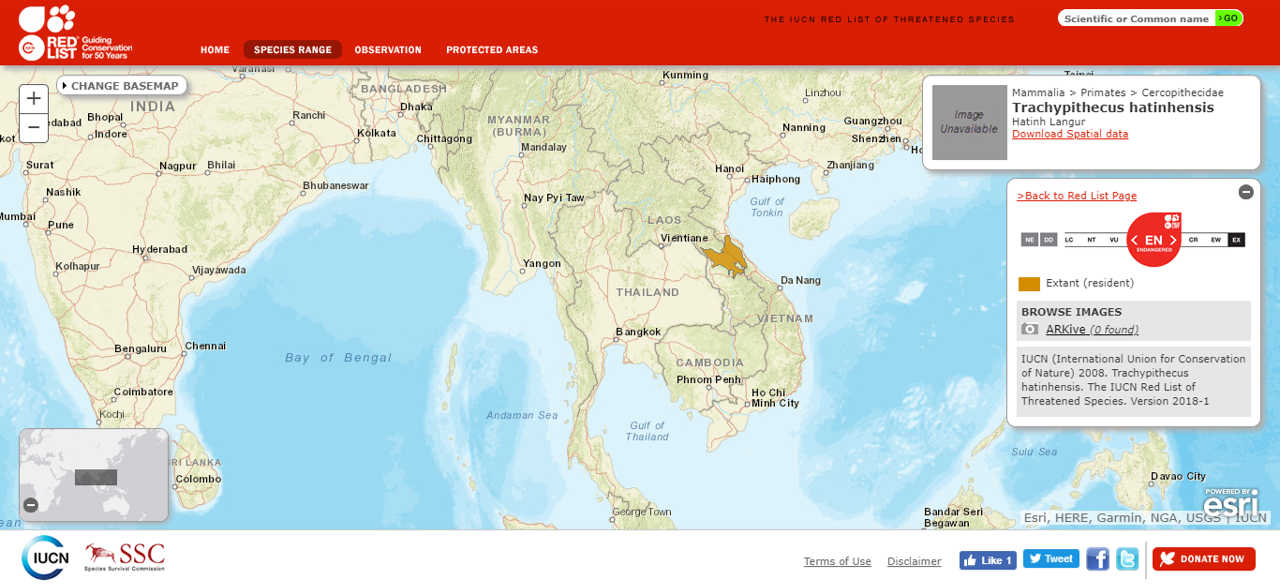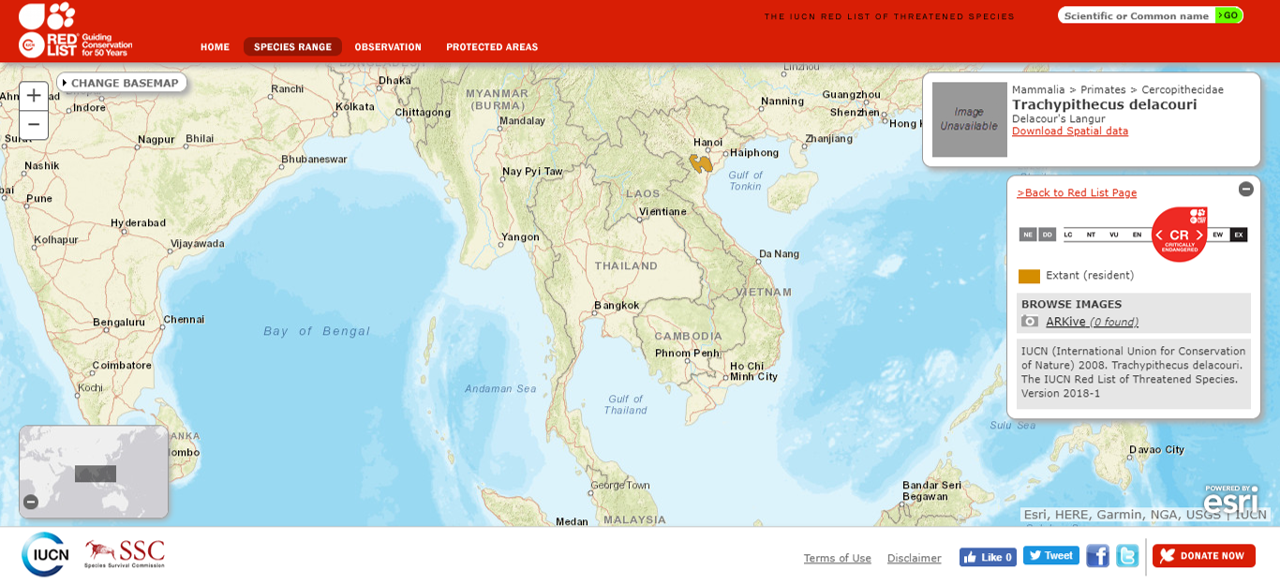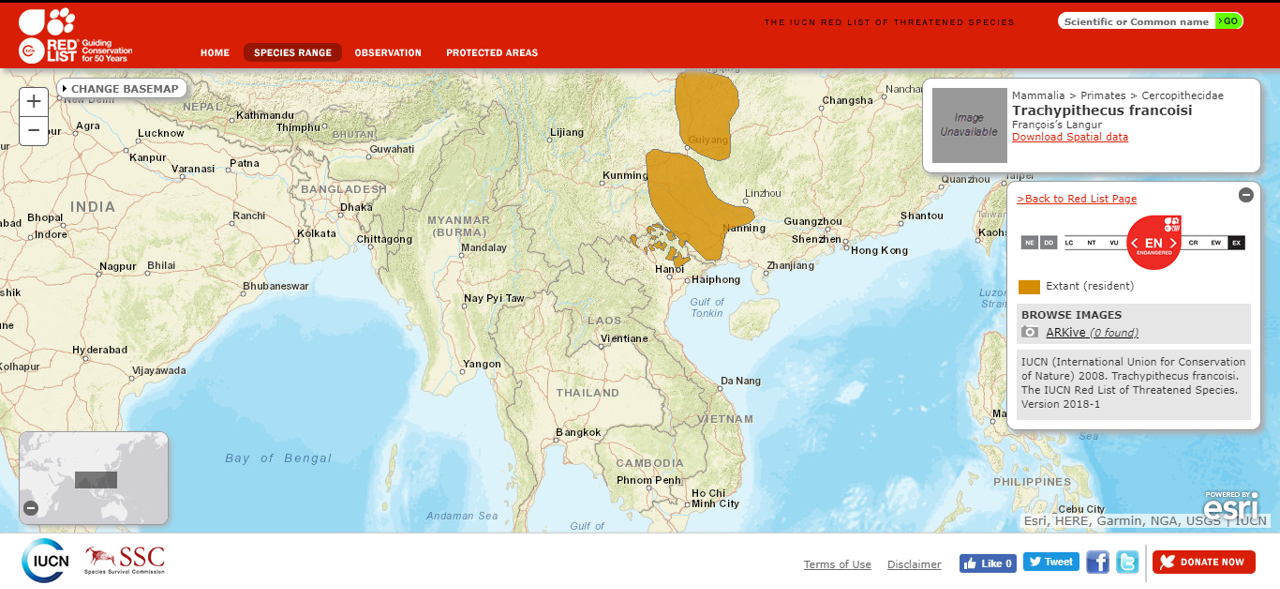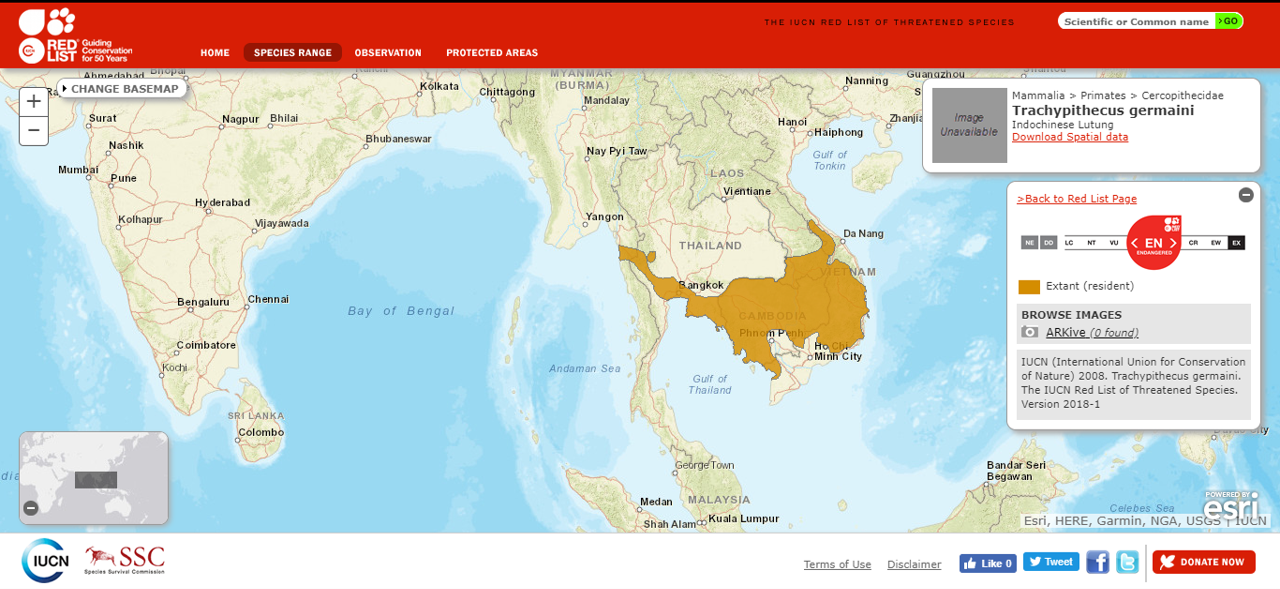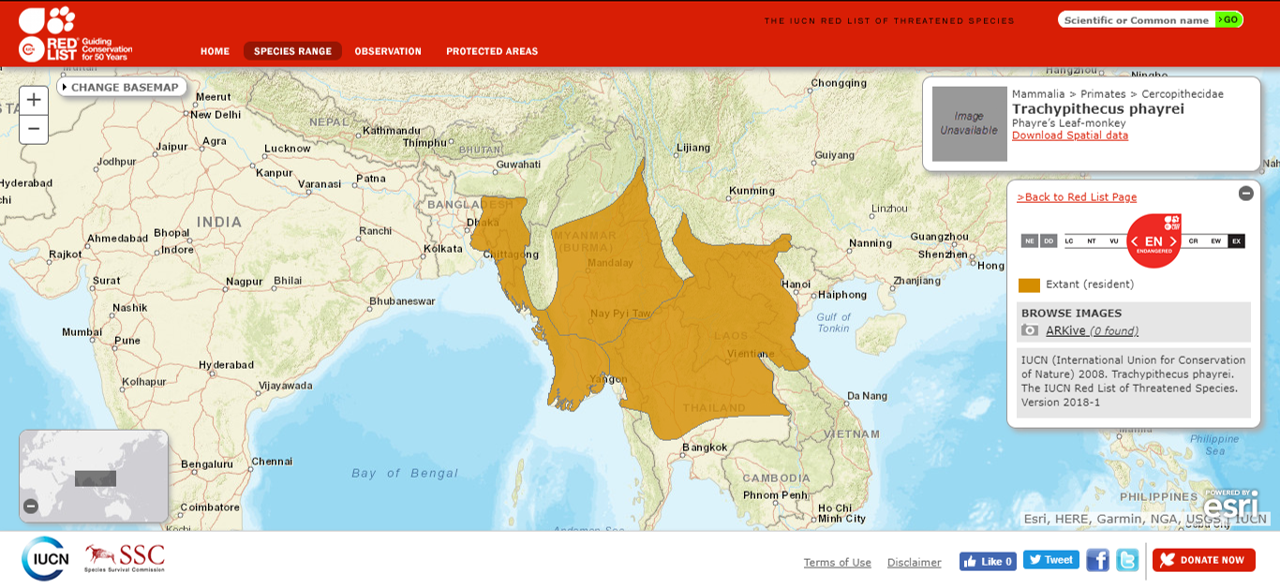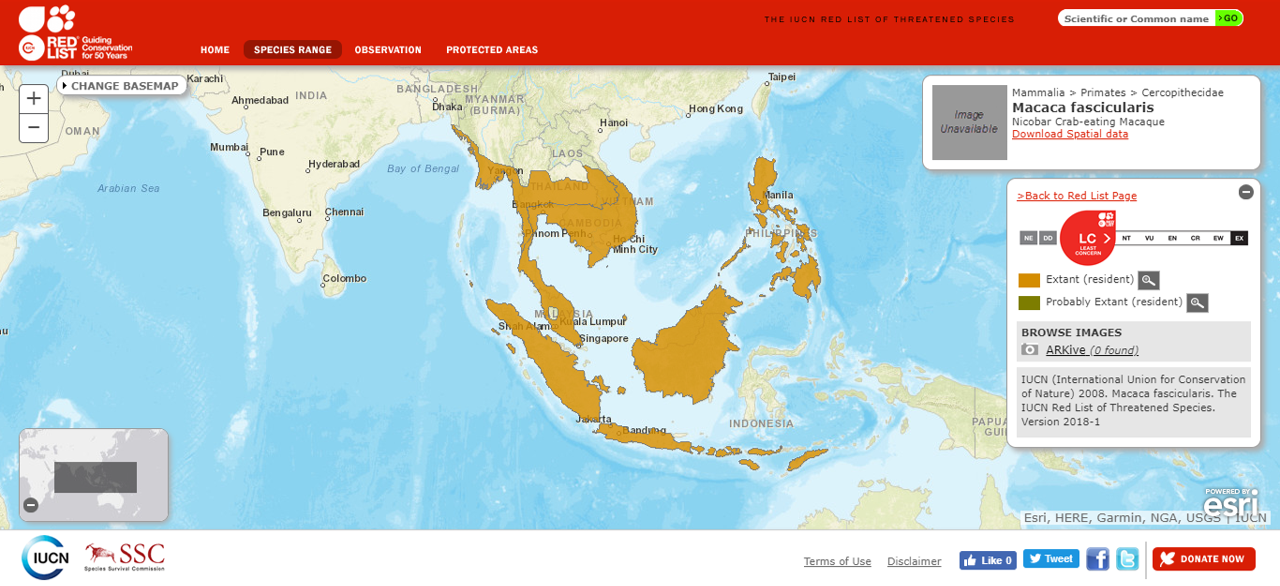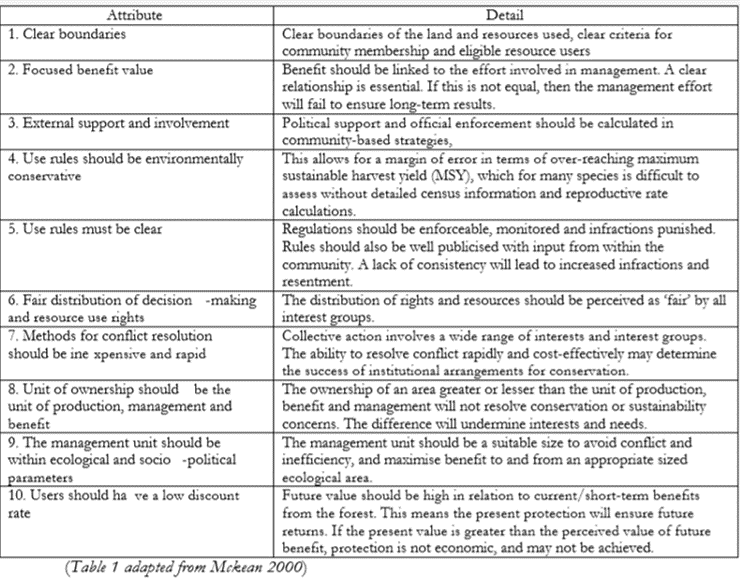Last call: the extinction crisis in Vietnam
Rich in wildlife, Southeast Asia includes at least six of the world’s 25 “biodiversity hotspots” – the areas of the world that contain an exceptional concentration of species, and are exceptionally endangered. The region contains 20% of the planet’s vertebrate and plant species and the world’s third-largest tropical forest. In addition to this existing biodiversity, the region has an extraordinary rate of species discovery, with more than 2,216 new species described between 1997 and 2014 alone. Global comparisons are difficult but it seems the Mekong region has a higher rate of species discovery than other parts of the tropics, with hundreds of new species described annually.
Vietnam is at risk of being the first country to lose a primate species to extinction. Eleven species that occur in Vietnam were listed as Critically Endangered – up 57% from 2008. Of all primate species, 88% are threatened with extinction. Several of these species occur only in Vietnam, putting the country in the spotlight for both its diversity of primates as well as the enormous threats they face, primarily from hunting and habitat loss. All but one species is listed as globally threatened. Read more: Even as more new species are found, Southeast Asia is in the grip of a biodiversity crisis
The 11 species from Vietnam now on the edge of extinction include:
Rich in wildlife, Southeast Asia includes at least six of the world’s 25 “biodiversity hotspots” – the areas of the world that contain an exceptional concentration of species, and are exceptionally endangered. The region contains 20% of the planet’s vertebrate and plant species and the world’s third-largest tropical forest. In addition to this existing biodiversity, the region has an extraordinary rate of species discovery, with more than 2,216 new species described between 1997 and 2014 alone. Global comparisons are difficult but it seems the Mekong region has a higher rate of species discovery than other parts of the tropics, with hundreds of new species described annually.
Vietnam is at risk of being the first country to lose a primate species to extinction. Eleven species that occur in Vietnam were listed as Critically Endangered – up 57% from 2008. Of all primate species, 88% are threatened with extinction. Several of these species occur only in Vietnam, putting the country in the spotlight for both its diversity of primates as well as the enormous threats they face, primarily from hunting and habitat loss. All but one species is listed as globally threatened. Read more: Even as more new species are found, Southeast Asia is in the grip of a biodiversity crisis
The 11 species from Vietnam now on the edge of extinction include:
Cat Ba langur (Trachypithecus poliocephalus) - fewer than 70 individuals
Tonkin snub-nosed monkey (Rhinopithecus avunculus) - fewer than 200 individuals
Grey-shanked Douc Langur (Pygathrix cinerea) - fewer than 1,500 individuals
Red-shanked douc (Pygathrix nemaeus) - population unknown
Black-shanked douc (Pygathrix nigripes) - population unknown
Western black-crested gibbon (Nomascus concolor) - fewer than 60 individuals in Vietnam
Southern Yellow-cheeked Crested Gibbon (Nomascus gabriellae) - greater than 10,000
Northern white-cheeked gibbon (Nomascus leucogenys) - fewer than 300 groups in Vietnam
Cao vit gibbon (Nomascus nasutus) - around 130 individuals
Southern white-cheeked gibbon (Nomascus siki) - population unknown
Hatinh Langur (Trachypithecus hatinhensis) - population unknown
Delacour’s langur (Trachypithecus delacouri) - fewer than 200 individuals
Francois's Langur (Trachypithecus francoisi) -fewer than 500 individuals
Indochinese Silvered Langur (Trachypithecus germaini) - population unknown
Phayre's Leaf Monkey (Trachypithecus phayrei) - population unknown
Con Dao macaque (Macaca fascicularis condorensis) - fewer than 2,000 individuals
Solutions
One strategy is community-based conservation: Opportunities for indigenous community management (WWF)
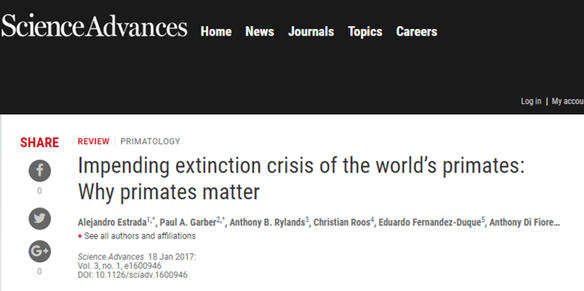
Nonhuman primates, our closest biological relatives, play important roles in the livelihoods, cultures, and religions of many societies and offer unique insights into human evolution, biology, behavior, and the threat of emerging diseases. They are an essential component of tropical biodiversity, contributing to forest regeneration and ecosystem health. Current information shows the existence of 504 species in 79 genera distributed in the Neotropics, mainland Africa, Madagascar, and Asia. Alarmingly, ~60% of primate species are now threatened with extinction and ~75% have declining populations. This situation is the result of escalating anthropogenic pressures on primates and their habitats—mainly global and local market demands, leading to extensive habitat loss through the expansion of industrial agriculture, large-scale cattle ranching, logging, oil and gas drilling, mining, dam building, and the construction of new road networks in primate range regions. Other important drivers are increased bushmeat hunting and the illegal trade of primates as pets and primate body parts, along with emerging threats, such as climate change and anthroponotic diseases. Often, these pressures act in synergy, exacerbating primate population declines. Given that primate range regions overlap extensively with a large, and rapidly growing, human population characterized by high levels of poverty, global attention is needed immediately to reverse the looming risk of primate extinctions and to attend to local human needs in sustainable ways. Raising global scientific and public awareness of the plight of the world’s primates and the costs of their loss to ecosystem health and human society is imperative.
